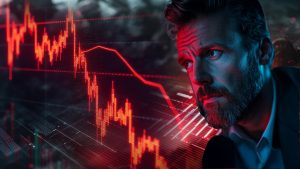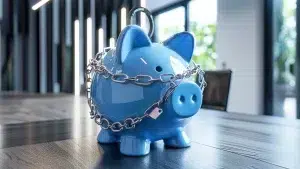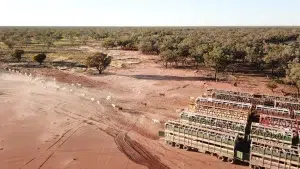By Vahan P. Roth
There is little doubt that RealUnit investors already know and appreciate the fact that investing in real, tangible assets offers a unique set of advantages that can fortify any portfolio, especially those developed with a long-term view, against crises, volatility and inflation.
Real assets in general offer a bounty of benefits that position them as a superior strategy for individual investors seeking both sustainable growth and stability. However, beyond real estate or physical precious metals, there is another asset class that often goes unmentioned: Agriculture, particularly farming and livestock. Perhaps it is because most individual investors are unable to get exposure in a way that is efficient and actually meaningful, or maybe because, like most “civilians”, they don’t really have a deep enough understanding of the operational aspects, unique complexities and particular dynamics of the businesses in this sector.
Whatever the case might be, it represents a missed opportunity to benefit from investments that boast a low correlation with traditional financial markets, offer meaningful diversification and real as well as reliable inflation protection. In times of market turbulence, the stability provided by agricultural investments can serve as a bulwark, shielding portfolios from the storm. Furthermore, the intrinsic value of agricultural assets cannot be overstated. Farmland, the bedrock of these investments, produces a tangible and essential commodity: food.
In a world where demand for sustenance will only escalate with population growth, the value proposition of owning land capable of meeting this fundamental need is undeniable. Long-term appreciation, the holy grail of investors, finds a fertile breeding ground in agriculture and farming. The rising tide of demand for agricultural products on the global stage further solidifies the case for investing in this sector. With the world’s population projected to surpass 9 billion by 2050, the need for food and agricultural commodities will only intensify. As arable and grazing land becomes increasingly scarce, the value of productive farmland is poised to rise. Investors with the foresight to cultivate these assets stand to reap the rewards of a burgeoning market, hungry for sustenance. Finding a company in this space that also meets fundamental investment criteria might not be easy, but it is certainly very rewarding.
This is exactly what RealUnit did when it identified a company that fits this description and why I was particularly excited to embark on my final assignment as CIO last month. I got to visit the sheep farms of Ovis AG and its partners in person in Australia, and see for myself where our investors’ savings are being put to work and how.
It is clear that there’s an ironclad investment case to be made here, on paper at least. As I can now confirm, this case certainly holds up in practice too. After spending two truly fascinating weeks “down under”, visiting sheep and goat farms in different regions in eastern Australia, getting to see first-hand how they operate and getting to know the people who operate them, I realized there were more advantages to this particular investment than I had originally factored in.
Together with two local partners, Mike Gordon and George Grimwade (G&G), Ovis AG has been investing since 2019 in building a diversified, actively managed, portfolio of sheep and goat farms in Australia. The goal is to achieve attractive capital gains, alongside an annual cashflow in the form of a dividend. What is also very interesting is that there are some very intriguing and unusual (at least from the viewpoint of a “banker”) performance metrics in place in this sector, as I learned from the conversations I had with Ovis partners and other industry players. For instance, one of the fund managers I had the pleasure to talk to explained to me that his performance is measured in relation to rainfall distribution in non-irrigated farms, so that in a “good year” better returns are expected.
The operational risks of Ovis AG are optimized, thanks to their purchase and lease structure, while both efficiency and land value are increased through investments in infrastructure (roads, fences, water distribution) and improvement of soil fertility. Thus, in addition to the returns from the sheep and goat farms, significant capital gains are also realized through the sale of the optimized land, which is then reinvested in farms with development potential in other areas. The growth trajectory is therefore very clear.
As I got to see for myself, the sheer scale of the land mass that the company owns really is impressive. For example, I got the chance to visit Yankalilla farm, a 78,100 hectare property, which can hold up to 60,000 sheep. I was also treated to a tour of Old Cobran farm, located in the Riverina region, spanning 9,100 hectares and capable of holding 35,000 sheep. Old Cobran serves as the operational hub for the G&G Co-Investment Strategy and it is where all animals are brought to be weighed, in order to ensure they meet the industry standards before they can be brought to market. Old Cobran can also be partially irrigated during drought periods. What’s more, even though there is a focus on goats and sheep alone which might pose some risks of investment concentration, the number and the location of the farms themselves provide diversification in terms of weather-related challenges such as wildfires and drought.
It is not hard to see the immense, real value of the total 220,000 hectares the consortium owns – if the total land holdings were a canton in Switzerland it would have been the sixth largest in the nation (slightly bigger than St. Gallen) – especially with all the development investments that have already been put into the land, like pastures, cutting edge fencing, irrigation for the production of livestock feed, watering systems, and shearing facilities.
Another advantage that Ovis has going for it is that Australia offers a reliable and predictable legal framework and a stable jurisdiction, while all operations are also completely independent of subsidies. Its immediate proximity to Asia and its Free Trade Agreement with China also offers a competitive edge, while prices for farmland are still attractive compared to other countries and the low AUD exchange rate is beneficial for foreign investors.
When it comes to the animals themselves that graze on that land, it is important to note that sheep represent a very interesting niche. Sheep meat accounts for approximately 5% of global protein consumption and current global production does not meet demand. As for goats, they also enjoy high demand, especially in Asia. Although Ovis did sustain a blow when sheep- and goat meat prices corrected last year, a result of the aforementioned investment concentration risk, the general assembly in 2022 already voted to implement a diversification strategy in order to reduce such risks in the future. What’s more, cost cutting measures have already been implemented by the operational team. In Yankalilla, for instance, the number of full-time employees has been reduced to only two.
Even more importantly, sustainable business practices seem to be a priority for Ovis. They use free-range farming and grass feeding methods instead of industrially produced feed, minimizing the use of fertilizers and pesticides, eschewing growth hormones entirely, and refraining from the systematic administration of antibiotics. I saw firsthand how the animals are managed, treated and cared for: From constant monitoring, to high quality veterinarian care and the freedom to roam and graze in open pastures, it was evident that these animals had a much better life than those that were born in any modern industrial livestock production facility. This answers a lot of environmental and animal welfare concerns, but it also offers undeniable benefits from an investment perspective too. The more natural the processes the sheep farms follow, the more independent and resilient they are.
All in all, this trip served to reinforce my conviction on the outlook of Ovis AG. Especially when one considers the bigger picture, the multitude of risks we face in conventional markets and in the geopolitical realm, betting on the future of human sustenance itself certainly makes sense. Even more so when this bet is placed in a tangible, practical, sustainable way.
The author





